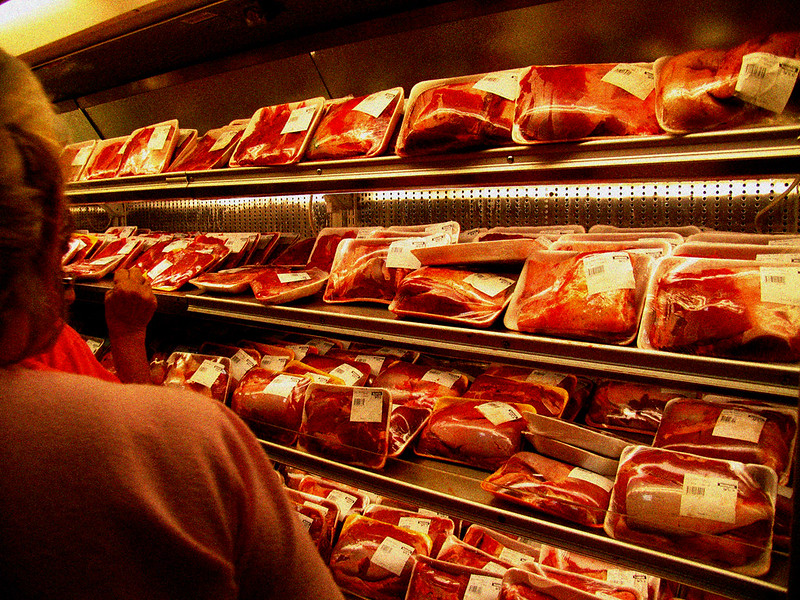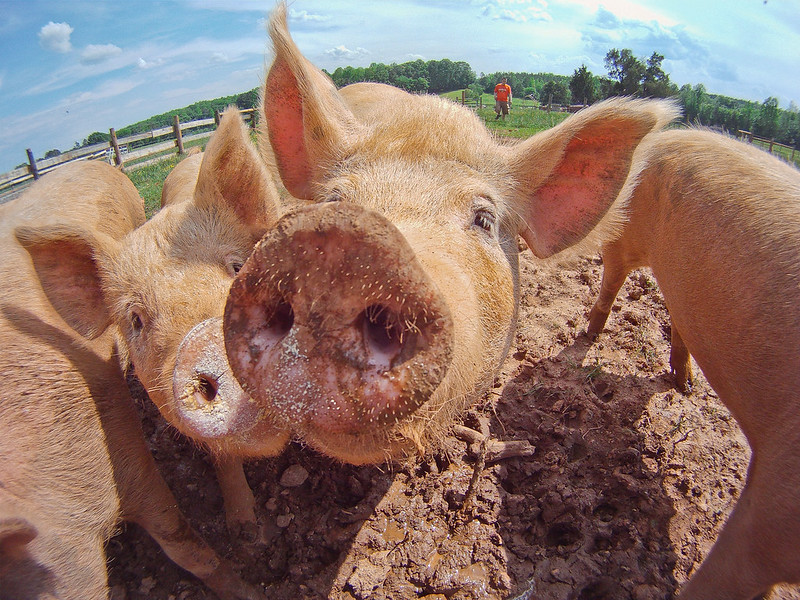What exactly is happening with the U.S. meat industry during COVID-19?
The mysterious airborne illness has sent the U.S. reeling into an economic recession, resulting in consumer-facing industries combating unique challenges—especially meat production. What effect will lowered meat production have on our overall environment?
When Agriculture Contracts, Forests Regrow
The largest and most destructive aspect of agriculture is its carbon and greenhouse gas emissions.

“About a third of the carbon in our atmosphere is there because of agriculture,” said Tim Searchinger, a research scholar in greenhouse gas emissions at Princeton University. He continues, “In order to produce beef, we’ve had to clear a huge amount of forest.”
Producing just one hamburger uses enough fossil fuel to drive a small car 20 miles. Of all raw materials and fossil fuels used in the U.S., more than one-third are devoted to raising animals for food. The meat industry specifically muddles reporting records of emissions, Searchinger says, and frequently does not take into account the land used to care for animals.
A glimmer of hope lies in the fact that the land can be reforested: When agriculture slows down, it allows more trees to regrow.
Christine McCracken, a meat analyst at Rabobank, said U.S. meat production declined by 20 percent in April, and predicted wholesale meat prices would rise directly as a result of COVID-19.

McCracken was right: On May 4, Tyson Foods informed investors that U.S. pork production had declined 50 percent. The same day, Costco announced restrictions on sales of fresh meat—limiting customers to purchasing no more than three items among poultry, beef and pork products. By May 5, Wendy’s stopped serving beef hamburgers at about 20 percent of its 5,500 U.S. restaurants.
This illustrates a narrative of possibility where some of the lands previously used for livestock will regrow due to COVID-19. The agricultural industry is contracting.
When agriculture contracts, forests regrow.
Decreased Rate of Pollution
Animals raised for food in the U.S. produce significantly more excrement than the entire human population of the country. To put this in perspective, a typical pig factory generates the same amount of raw waste as a city of 12,000 people.

The pollution has had such a devastating effect on all aspects of the environment that the Union of Concerned Scientists lists meat-eating as one of the biggest environmental hazards facing the Earth. Globally, animal agriculture is responsible for more greenhouse gases than all the world’s transportation systems combined.
According to the U.S. Environmental Protection Agency (EPA), animals on U.S. factory farms produce about 500 million tons of manure each year. With no animal sewage plants, this excrement is stored in waste “lagoons” or sprayed over fields. Runoff from factory farms and livestock grazing is a leading cause of pollution in U.S. rivers and lakes.
A report by the California State Senate noted: “Studies have shown that [animal waste] lagoons emit toxic airborne chemicals that can cause inflammatory, immune, irritation and neurochemical problems in humans.”
Water Conservation
According to the Environmental Protection Agency, raising animals for food is the number-one source of water pollution. It takes an enormous amount of water to grow crops for animals to eat.
A single cow used for milk can drink up to 50 gallons of water per day, and it takes 683 gallons of water to produce one gallon of milk. It takes more than 2,400 gallons of water to produce one pound of beef, while producing one pound of tofu only requires 244 gallons of water. If one person decides to go vegan, they alone could save approximately 219,000 gallons of water a year.
COVID-19 has stretched the meat and dairy industry to its limits. Without as many animals to feed and take care of, water usage has plummeted. The U.S. is currently conserving an extraordinary, yet undetermined, amount of water.
Animals Are Still Suffering
Due to the exorbitant rate of mass meat production, combined with meat plant closures, animals have been paying the price: The Guardian reported on April 29 that two million farm animals had been culled as a result of the closures.
As of May 19, 10 million hens had been culled, and the same number of pigs will be culled by September. Methods of culling include gassing, suffocation, drowning, shooting, anaesthetic overdose, blunt force trauma and ventilation shutdown—actions many animal welfare groups have deemed inhumane.
While less animals overall means less pollution, water waste, deforestation and greenhouse gas emissions; the way they are being killed is horrific. The goal is to utilize far fewer animals in the first place, not to needlessly slaughter extra ones.
What Does This Mean for Us?
When land is used to raise animals instead of crops, precious resources like water and soil are lost, while trees are cut down to make land for factory-farms. According to Greenpeace, the goal is not for the entire American population to adopt a “meatless” diet tomorrow—but rather a meat consciousness that actively works to reduce the amount of meat consumed in everyday life.
COVID-19 has slowed the rate of meat production, which in turn has allowed for rates of pollution, water waste and greenhouse gases to decline. If this lowered rate of production continues into a post-pandemic world, we could see environmental change on a grand scale.





